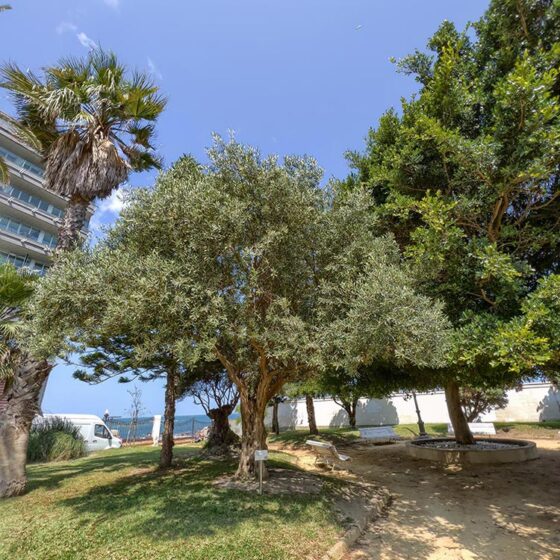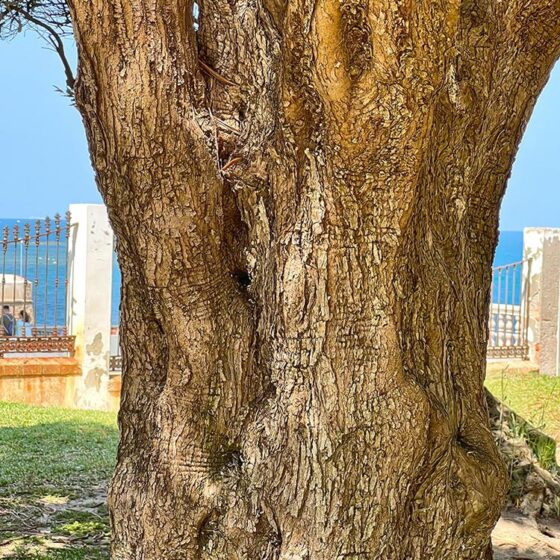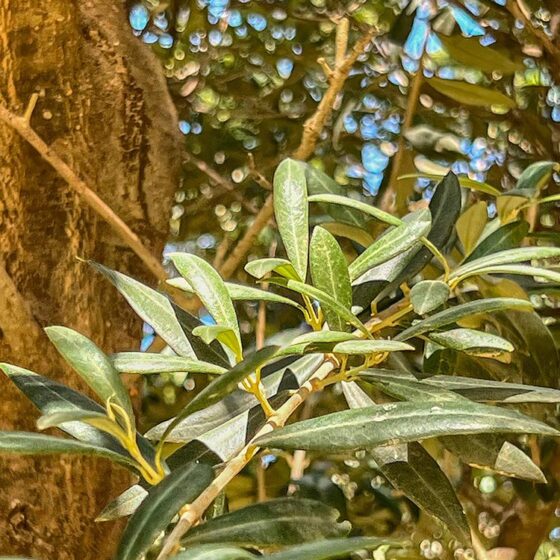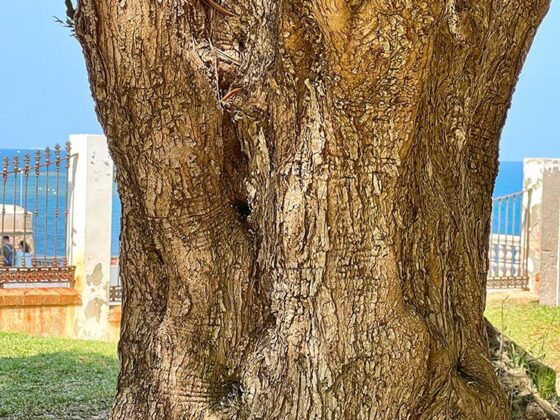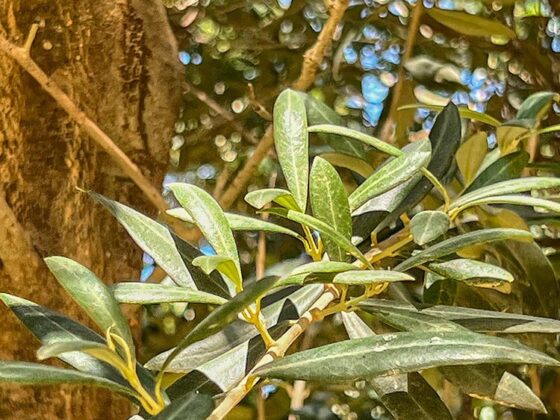The European Olive
Olea europaea
The Latin name of the genus Olea derives from the Greek Elaia, which means oil. Consecrated to the goddess Minerva, it has also been related to the athletic games since the winners in the Olympic Games were crowned with wild olive branches.
The wild olive native to the Mediterranean region is known as Acebuche and the cultivated variety or “sativa” is the one that produces the edible olives and olive oil, from which the oil is made. Spain is the main producer of oil in the world.
In the centenary specimens, the trunk twists and bends. The leaves are leathery and strong, are of a greenish-grey colour and silvery on the underside. The flowers are small white in axillary clusters which blossom in Spring and allow for fruits or olives in the form of drupe, which are harvested at the end of Autumn.
Its wood is very hard and compact, and can be dyed and polished. Carpenters and turners appreciate it, as they are able to make many pieces with it. The olives, in addition to being aperitifs, contain a large quantity of oil obtained by the press. It is used in medicine and especially in human nutrition and in the soaps and cosmetics industries. In order to be consumed the olives are prepared by making their bitter taste disappear. They are marinated with fennel, thyme and other aromatic plants, depending on the region, so there is a great variety.
In Cadiz, you can see some of these trees in Avenida José León de Carranza, Plaza Ingeniero La Cierva, Parque de Varela and Parque de los Cinco Continentes.


